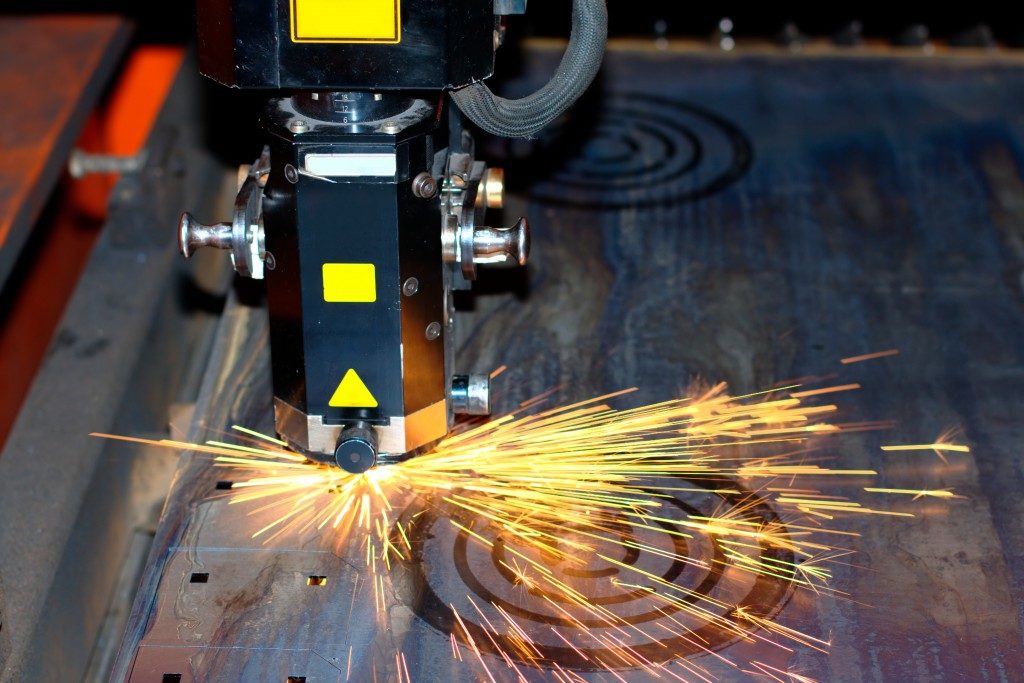Efficient cutting processes reduce material waste, increase rate of production, and involve little to no cleanup. The high degree of precision that metal cutting technology provides allows for increased efficiency and productivity in the manufacturing industry. 1967 marked the beginning of the use of lasers for industrial material processing. Today, laser cutting machines continue to take up the largest portion of the metal cutting machine market, going beyond that of plasma, water-jet, and mechanical cutting.
Basics of Laser Cutting
Laser cutting technology involves the use of high-energy beams of light for burning, melting, or blowing away various materials. A laser cutter produces a beam to cut through materials like sheet metal, wood, diamond, glass, plastics, and silicon.
In the past, the beam was directed to its target spot with the use of mirrors. However, fiber optics is more commonly used for directing light today. A lens allows the beam to focus on and burn, melt, or vaporize a specific area on a material. The process depends on the method of laser cutting employed.
Laser Fusion Cutting
Laser fusion cutting melts material and uses a high-pressure stream of gas to move molten material away. Material is cut all the way through because the lasers produce beams that operate in continuous waves and with long pulses of light. The lasers go through the entirety of the metal. However, this requires the material be immediately sheared out of the gap to prevent the molten pool to harden upon cooling.
This type of cutting is much faster than ablative laser cutting for cutting materials about 0.5mm to 12mm thick.
Ablative Laser Cutting

Ablative cutting involves the use of a pulsed laser to remove material layer by layer on a microscopic scale. Unlike laser fusion, this type of laser cutting evaporates and does not melt material. It can be used to create either a partial or a complete cut through materials.
Materials for Laser Cutting
Laser cutters are used for a wide range of materials across many industries. Reflectance is an important consideration for determining the type of material laser cutting can be used to cut through. Modern fiber lasers are equipped with an optical setup and provided high peak power to cut through all reflective metals.
However, despite advancements and improvements in fiber laser technology, material thickness remains a significant limitation for laser cutting. The general maximum surface thickness of metal is one inch. Thicker material is better and more efficiently cut with other types of cutting tools.
Efficient Laser Cutting
A common misconception of laser cutting is that efficiency is dependent on raw laser power. This perception implies greater power can automatically improve efficiency. However, advancements undergone by fiber laser technology mean lasers depend on and can be improved by factors beyond simply increasing laser beam power. Efficiently cutting through thin materials requires improvements in the machine dynamics responsible for acceleration and deceleration.
Laser cutting technology is especially beneficial when running large production lines. Laser cutters continue to dominate the cutting machine market and allow manufacturers to save on time and reduce waste.

